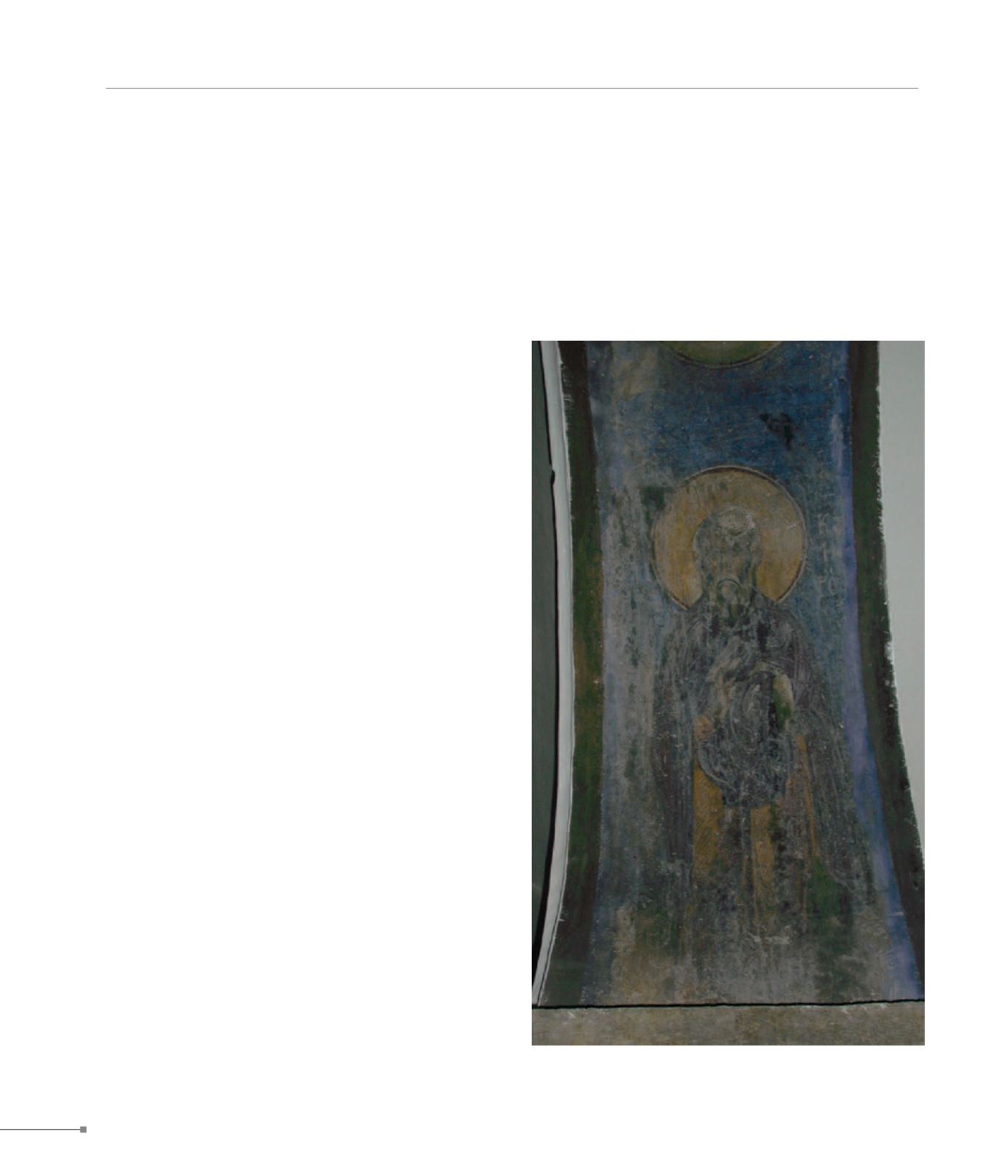
Voroi.
Gortyna.
CRETE
270
437. Aghioi Deka, wall painting (Άγιοι Δέκα, τοιχογραφία)
434.
Voroi.
Saint George’s is a small, barrel-vaulted, single-nave church
with wall-paintings dating from the early 14th c. In the old,
ruined monastery of Panagia Kardiotissa, a metochion of
Vrontisi, the large catholicon still stands: a barrel-vaulted, twin-
naved church resulting from the addition of a nave to the N
section of the original church in the late 15th c. Its exterior fea-
tures a single-lobed Gothic belfry. The selection and arrange-
ment of the iconographical programmes have some unusual
characteristics.
435.
Kasteli.
The Castel Pediada fortress was built on a low hill in the
present-day town of Kasteli Pediadas. Sparse remains survive
at the site of the gymnasium. The fortress was originally con-
structed in the second Byzantine period. It was rebuilt after the
occupation of Crete by the Venetians as a seat of the “sestiere
(district) of Saint Mark”, and then as a seat of the Castellany
of Pediada, in order to control this extremely fertile region of
Crete: it served as a storage facility for the large quantities of
local grain. The Castel Pediada was a rectangular structure
with square towers on the corners; it had visual contact with
the fortresses of Tholoi, Katalagari and Lyktos. A settlement
grew up around it.
436.
Church of Christ at Kasteli.
The barrel vault over the large church of Christ displays two
building phases with respective painted decoration. In the E
section there are Palaeologan evangelical scenes of the mid-
14th c., while the W preserves the original decoration with full-
body saints’ figures on the side walls, in an archaic, provincial
style, dating to the 13th c.
437.
Aghioi Deka.
The large, three-aisled, barrel-vaulted, Mid-Byzantine basilica
is associated with the Ten Holy Martyrs who suffered their fate
during the persecutions of Roman Emperor Decius (circa 250-
1). The church was possibly founded above an Early Chris-
tian basilica. Wall-paintings are preserved only on the intrados
of colonnades, featuring well-executed, full-body figures of
saints dating from the first half of the 13th c.
438.
Gortyna.
In Gortyna, the capital of Crete during the Roman and Early
Christian periods, a spacious church was founded dedicated
to Aghios Titos, the first bishop of Crete, who settled on the
island thanks to Apostle Paul. The ruined church dates to the
7th c., according to prevailing views. It is a cruciform, three-
aisled basilica with dome, and conches at the end of the N


